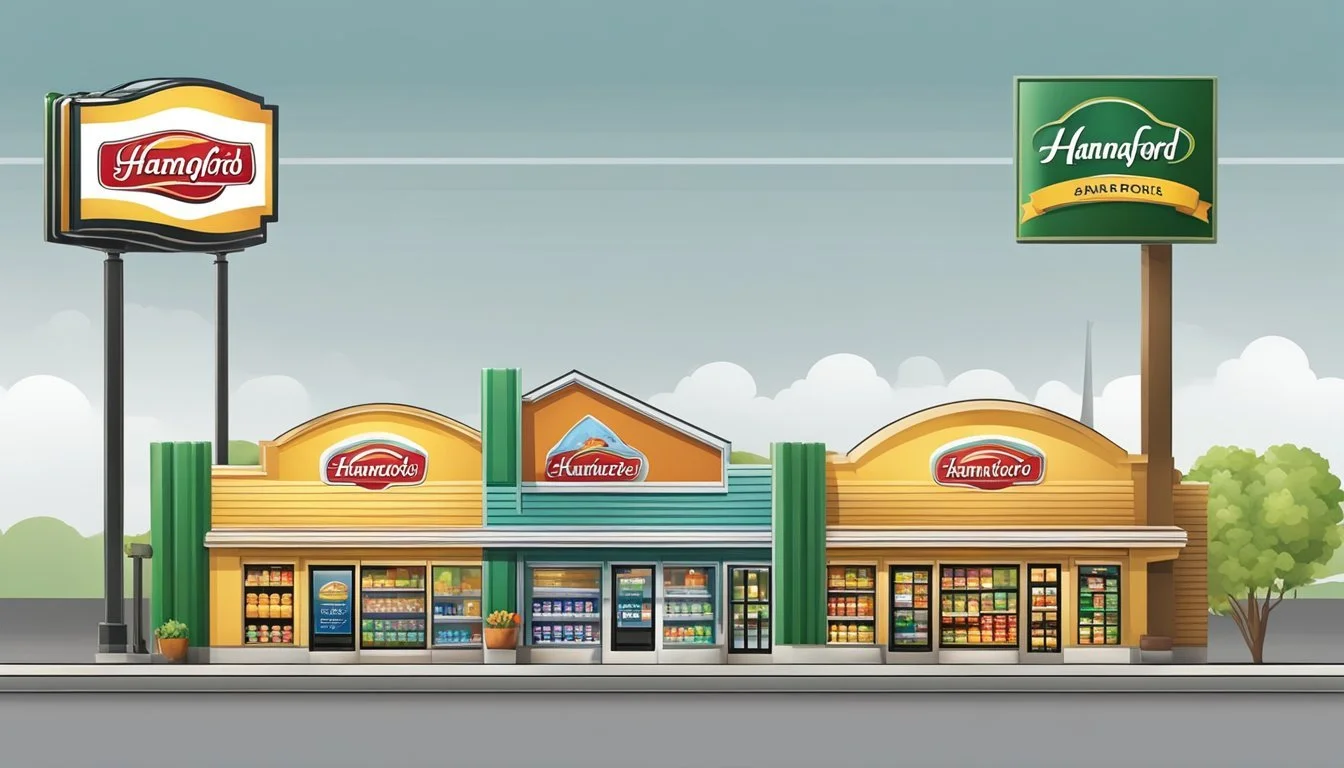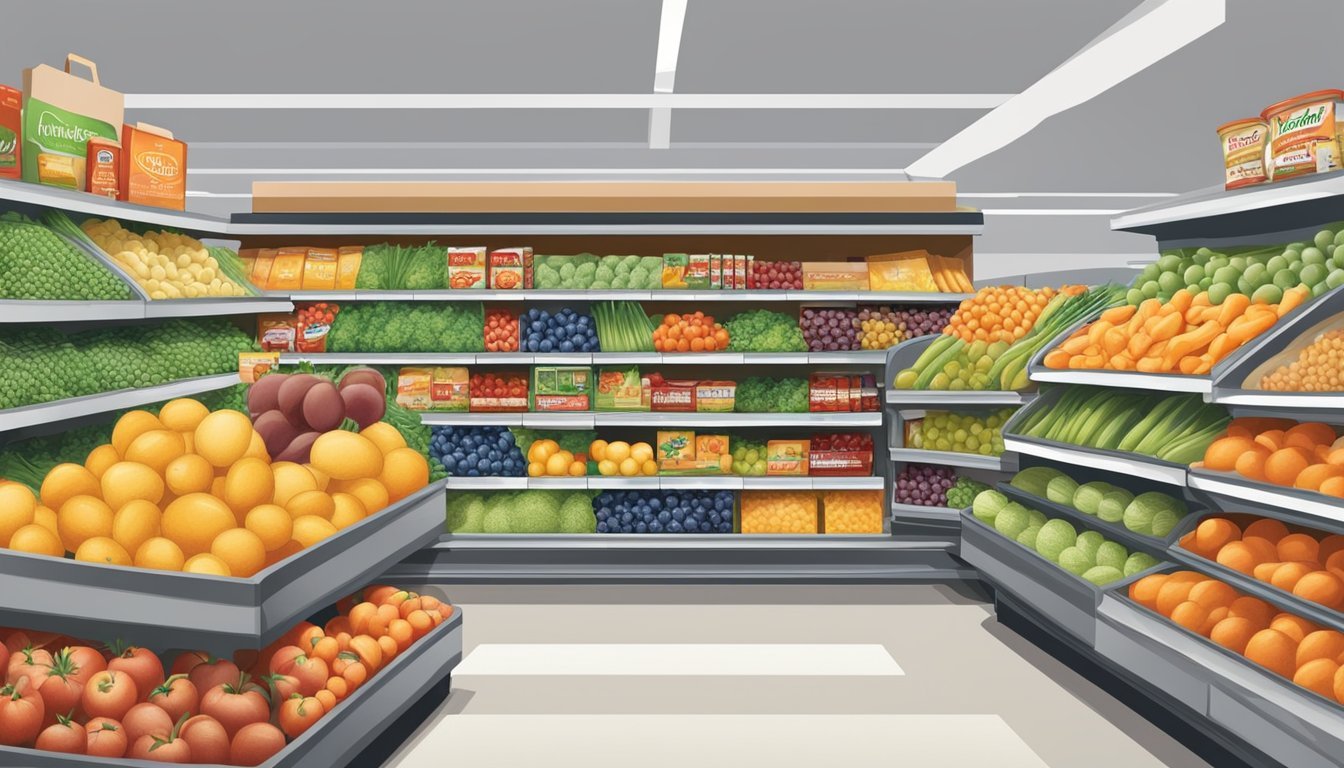Hannaford vs Ralphs
A Comprehensive Comparison of Price, Quality, and Selection
Grocery shopping is a regular task for most households, and choosing the right supermarket can significantly impact both budget and satisfaction. Hannaford and Ralphs are two well-known grocery chains in their respective regions, each offering unique advantages to shoppers.
While Hannaford tends to excel in fresh produce and local offerings, Ralphs often provides a wider selection of national brands and competitive pricing on staple items. The choice between these two supermarkets ultimately depends on individual preferences and shopping habits.
Both Hannaford and Ralphs have loyal customer bases and strive to meet the diverse needs of their communities. Factors such as store layout, customer service, and special promotions can all play a role in determining which grocery store shoppers prefer for their regular trips.
Corporate Profiles
Hannaford and Ralphs represent two distinct grocery chains with rich histories and unique growth trajectories. Both have become significant players in the supermarket industry through different paths of expansion and acquisition.
History and Growth of Hannaford
Hannaford's roots trace back to 1883 when Arthur Hannaford began selling produce from a cart in Portland, Maine. The company gradually expanded its operations, opening its first grocery store in 1927.
By the 1960s, Hannaford had built a 200,000-square-foot distribution center in South Portland, signaling its commitment to growth. The acquisition of 31 Sampson's grocery stores in 1966 marked a significant expansion of Hannaford's retail presence.
Throughout the following decades, Hannaford continued to grow through strategic acquisitions and new store openings. The company's focus on quality products and customer service helped establish it as a trusted name in the Northeast.
Ralphs and the Kroger Family
Ralphs Grocery Company was founded in 1873 by George Albert Ralphs in Los Angeles. The small store quickly gained popularity for its quality products and friendly service.
Over the next century, Ralphs expanded throughout Southern California, becoming a household name in the region. In 1998, Ralphs became part of the Kroger family of companies through a merger.
As part of Kroger, Ralphs benefited from increased resources and buying power. This alliance allowed Ralphs to maintain its local brand identity while leveraging Kroger's national scale and distribution network.
Today, Ralphs operates as a subsidiary of Kroger, one of the largest supermarket chains in the United States. This relationship has helped Ralphs compete effectively in the challenging California grocery market.
Store Locations and Accessibility
Hannaford and Ralphs operate in distinct regions of the United States, catering to different geographic markets. Their store locations and expansion strategies significantly impact consumer access and shopping convenience.
Hannaford's Regional Presence
Hannaford maintains a strong presence in the northeastern United States. The supermarket chain operates 186 stores across five states: Maine, New Hampshire, Vermont, Massachusetts, and New York. Hannaford's most recent store opening occurred in Blue Hill, Maine in May 2023.
The company focuses on serving both urban and rural communities. Many Hannaford stores are located in smaller towns and cities, providing essential grocery services to areas that might otherwise have limited options.
Hannaford continues to invest in store upgrades and expansions. In the first half of 2023, the company completed enhancements at six existing locations, improving the overall shopping experience for customers.
Ralphs' Expansion and Coverage
Ralphs primarily serves Southern California, with a concentrated presence in the Los Angeles metropolitan area. The supermarket chain boasts a long history, dating back to 1873, making it one of the oldest continuous grocery store chains in the United States.
Ralphs' focus on Southern California allows it to tailor its offerings to local preferences and needs. The chain's numerous locations throughout the region provide easy access for many consumers in urban and suburban areas.
Unlike Hannaford's multi-state presence, Ralphs operates within a more geographically limited area. This concentration allows the company to maintain efficient supply chains and respond quickly to regional market demands.
Product Range and Quality
Hannaford and Ralphs offer diverse product selections, but differ in their focus on quality and specialty items. Both chains prioritize fresh produce and meats, while catering to various dietary needs and preferences.
Freshness and Quality of Produce
Hannaford emphasizes locally-sourced fruits and vegetables, often partnering with regional farmers. This approach ensures fresher produce with shorter transport times. Their "Fresh Guarantee" policy allows customers to return any unsatisfactory items for a full refund.
Ralphs, part of the Kroger family, offers a wide variety of produce, including both conventional and organic options. They implement a "Fresh for Everyone" program, focusing on quality control and quick restocking of produce displays.
Both stores use color-coded labeling systems to indicate produce freshness, helping customers make informed choices.
Meat Selection and Standards
Hannaford prides itself on its meat department, offering a range of high-quality cuts. They source from trusted suppliers and maintain strict standards for their beef, pork, and poultry.
Ralphs provides an extensive meat selection, including their "Simple Truth" line of natural and organic meats. They offer various grades of beef, from Select to Prime, catering to different customer preferences and budgets.
Both chains have in-store butchers who can provide custom cuts and offer advice on meat preparation.
Organic and Specialty Items
Hannaford has expanded its organic offerings in recent years, featuring their "Nature's Place" brand for natural and organic products. They also stock a variety of international and specialty foods to cater to diverse tastes.
Ralphs boasts a larger selection of organic and specialty items, particularly through their "Simple Truth" and "Private Selection" brands. These lines cover a wide range of products, from organic produce to gourmet ingredients.
Both stores offer gluten-free, vegan, and other specialty diet options. Ralphs tends to have a broader selection in this category, especially in larger urban locations.
Pricing and Value
Hannaford and Ralphs employ different pricing strategies to attract and retain customers. Both chains aim to offer competitive prices on common grocery items while providing savings opportunities through various programs.
Comparison of Everyday Prices
Hannaford generally offers lower prices on many everyday items compared to Ralphs. Their store brand products are often 10-15% cheaper than national brands. Ralphs, owned by Kroger, tends to have slightly higher regular prices but compensates with frequent sales.
Hannaford's "Great Value" items are consistently priced low. These include staples like milk, bread, and eggs. Ralphs focuses on competitive pricing for fresh produce and meat.
A typical grocery basket at Hannaford may cost 5-8% less than at Ralphs for similar items. However, prices can vary by location and season.
Deals, Discounts, and Savings Programs
Both stores offer digital coupons and weekly specials to help customers save. Hannaford's "My Hannaford Rewards" program gives 2% back on store brand purchases and personalized offers.
Ralphs' rewards program is tied to the Kroger Family of Stores. It provides fuel points and digital coupons. Members can save up to $500 annually through personalized deals.
Hannaford runs "Buy One, Get One Free" promotions on select items. Ralphs often features "Mix and Match" deals, allowing customers to save when buying multiple items.
Senior discounts are available at both chains on certain days. Ralphs offers additional savings through their pharmacy program for prescriptions.
Customer Experience
The customer experience at Hannaford and Ralphs differs in several key areas. Both stores aim to provide a pleasant shopping environment, but they have distinct approaches to cleanliness, service, and checkout efficiency.
Store Cleanliness and Layout
Hannaford prides itself on maintaining spotless stores with wide, uncluttered aisles. Their layout is designed for easy navigation, with clear signage directing customers to different departments. Produce sections are typically well-organized and frequently restocked.
Ralphs also emphasizes cleanliness but takes a different approach to store layout. Their stores often feature a more compact design, which can feel crowded during peak hours. However, this layout allows for a greater variety of products in a smaller space.
Both chains regularly sanitize high-touch areas and provide hand sanitizer stations throughout the store. Hannaford tends to have a slight edge in overall store cleanliness, according to customer feedback.
Customer Service Quality
Hannaford staff are known for their friendly demeanor and product knowledge. Employees receive extensive training on store policies and product information, enabling them to assist customers effectively.
Ralphs employees are generally helpful, but the level of service can vary between locations. Some customers report excellent interactions, while others note inconsistencies in staff availability and knowledge.
Both stores offer assistance with bagging groceries and carrying items to vehicles for customers who need help. Hannaford's customer service often receives higher marks for consistency across different store locations.
Checkout Efficiency and Experience
Hannaford invests in technology to streamline the checkout process. Many stores feature self-checkout options and mobile payment systems. Their cashiers are trained to be efficient while maintaining a friendly attitude.
Ralphs also offers self-checkout kiosks and various payment options. During busy periods, they often open additional registers to reduce wait times. Some customers appreciate Ralphs' loyalty program, which can be easily applied at checkout for discounts.
Both stores aim to minimize wait times, but Hannaford's focus on efficiency often results in slightly faster checkout experiences. Ralphs counters this with personalized offers through their loyalty program, enhancing the overall checkout experience for regular customers.
Brand Perceptions and Consumer Reports
Hannaford and Ralphs have cultivated distinct brand images in their respective markets. Consumer Reports surveys provide valuable insights into how customers perceive these grocery chains.
Market Reputation and Consumer Trust
Hannaford has built a strong reputation in the Northeast for quality store brands. Consumer Reports ranks Hannaford's private label products highly, indicating customer trust in their offerings. The chain focuses on fresh, local produce and community engagement.
Ralphs, a Kroger subsidiary, leverages its parent company's national presence. Its Simple Truth organic line garners praise from health-conscious shoppers. Ralphs emphasizes competitive pricing and a wide selection of products.
Both chains prioritize food safety and cleanliness, key factors in building consumer trust. Hannaford's smaller footprint allows for more personalized service, while Ralphs benefits from Kroger's economies of scale.
Overall Customer Satisfaction Surveys
Consumer Reports surveys reveal mixed results for both chains. Hannaford scores well in customer service and store layout categories. Shoppers appreciate the chain's efficient checkout process and helpful staff.
Ralphs receives positive marks for its loyalty program and digital coupons. Customers value the chain's extensive product range and competitive prices. However, some surveys indicate lower satisfaction with in-store experience compared to Hannaford.
Both chains face challenges in certain areas. Hannaford's limited geographical presence can be a drawback for some consumers. Ralphs sometimes struggles with long checkout lines during peak hours, impacting overall satisfaction scores.
Conclusion
Hannaford and Ralphs both offer unique strengths as grocery stores. Hannaford stands out for its emphasis on local products and community involvement. The chain prioritizes fresh, quality offerings, particularly in produce and seafood departments.
Ralphs, part of the larger Kroger family, leverages its size to provide competitive pricing and a wide selection. The store excels in offering diverse prepared food options and an extensive array of national brand products.
Price-conscious shoppers may find better deals at Ralphs, while those prioritizing local and organic options might prefer Hannaford. Both chains maintain clean, well-organized stores and offer loyalty programs to enhance customer value.
The ideal choice depends on individual preferences. Customers seeking a more personalized shopping experience often gravitate towards Hannaford. Those who value variety and consistently low prices may find Ralphs more appealing.
Ultimately, both Hannaford and Ralphs deliver solid customer experiences. They each fulfill core grocery needs while catering to different shopper priorities. The best option will vary based on location, specific product needs, and personal shopping habits.








